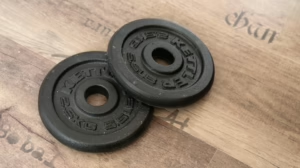Fit for Success: How to Use a Fitness Calculator to Achieve Your Goals
Achieving personal fitness goals is a journey that involves dedication, understanding, and the right tools. One of the most effective tools to adopt in this journey is a fitness calculator. This article explores how fitness calculators work and provides a comprehensive guide on how to use them effectively to reach your fitness goals.
What is a Fitness Calculator?
A fitness calculator is a digital tool that assists individuals in tracking various aspects of their fitness journey. It can help estimate calorie needs, calculate body mass index (BMI), measure body fat percentage, and assess fitness levels based on activity. Such tools simplify the relationship between diet and exercise, making it easier for users to achieve their goals, whether they pertain to weight loss, muscle gain, or overall well-being.
Why Use a Fitness Calculator?
Personalized Insights
Every body is unique; hence, a one-size-fits-all approach doesn’t yield the best results in fitness. Fitness calculators allow users to input their age, weight, height, gender, and activity level to receive tailored feedback about their calorie needs and fitness milestones. This personalization helps users establish realistic goals and track their progress effectively.
Accountability and Motivation
Tracking one’s progress through a fitness calculator encourages accountability. Users can visually see how far they’ve come and what still needs to be done. This form of tracking promotes consistent efforts and can lead to higher motivation levels. A fitness calculator not only informs about current stats but also sets future targets.
Informed Decisions
A fitness calculator enables you to make informed choices about your diet and exercise routines. By understanding your daily caloric needs and nutritional requirements, you can plan meals and workout routines that align with your goals. This knowledge empowers individuals to make healthier choices and be mindful of their lifestyle.
Injury Prevention
Fitness calculators help users identify potential risks associated with different activities, thereby reducing the likelihood of injury. By providing data about body composition and exercise intensity, these tools can recommend appropriate workouts that suit individual fitness levels.
Types of Fitness Calculators
1. Calorie Counters
Calorie counters help assess daily energy expenditure. By outlining your activity level (sedentary, lightly active, moderately active, very active), these calculators help determine how many calories you should consume to maintain, lose, or gain weight. Calorie counting is often the backbone of any fitness routine.
2. Body Mass Index (BMI) Calculators
BMI calculators utilize weight and height to determine a numeric value that categorizes individuals into weight classes (underweight, normal, overweight, and obese). While BMI isn’t a perfect measure of health, it serves as a useful benchmark for assessing weight-related health risks.
3. Body Fat Percentage Calculators
These calculators offer insights into the proportion of fat in your body compared to lean mass. Understanding body fat percentage can provide additional motivation for fitness enthusiasts, as it offers a more accurate representation of body composition than weight alone.
4. Basal Metabolic Rate (BMR) Calculators
BMR calculators estimate the number of calories a person expends at rest, providing a baseline for understanding total calorie needs. This number is essential for determining how many calories you should consume for weight loss or muscle gain.
5. Fitness Goal Calculators
Specific tools exist to allow users to measure progress toward particular goals. For example, calculators for weight loss might suggest how many calories to cut from diet or how much exercise is needed to achieve a defined target weight.
Steps to Use a Fitness Calculator
Step 1: Define Your Fitness Goals
Before using a fitness calculator, it’s crucial to define your goals. Are you looking to lose weight, build muscle, improve stamina, or simply maintain your current level of fitness? Having a clear objective will guide the calculator’s input and output.
Step 2: Gather Your Data
Most calculators require personal information such as:
- Age
- Weight
- Height
- Gender
- Activity Level (Sedentary, Light Activity, Moderate Activity, High Activity)
Step 3: Input Data
Once you gather your data, input it into the calculator. There are many platforms available—some freely accessible online, while others may be integrated into fitness apps.
Step 4: Analyze Results
The calculator will provide results based on the information you input. It’s essential to read these results critically:
- For calorie requirements, note the suggested daily intake for maintaining, losing, or gaining weight.
- For BMI, consider where you fall within the classifications and note any potential health risks.
- If using a body fat percentage calculator, validate the accuracy of results by comparing them against other methods, if possible.
Step 5: Set Realistic Milestones
Using the results, set realistic short- and long-term milestones. For weight loss, for instance, aim for 1-2 pounds a week as a safe and manageable goal. If your goal is muscle gain, appreciate that changes can be gradual, often taking weeks or months to manifest.
Step 6: Develop an Action Plan
Create a detailed plan that integrates the insights gained from the calculator results. This plan may include diet modifications, exercise routines, and additional strategies, such as hydration and rest, all designed to help you meet your fitness goals.
Step 7: Track Progress Regularly
Frequent tracking will allow you to monitor whether you’re on track towards your goals. Many calculators or fitness apps allow you to log changes in weight or body measurements over time. This regular logging will help in making necessary adjustments to your diet or exercise routine to stay aligned with your goals.
Step 8: Reassess Your Goals
As you progress, it’s important to reassess your goals periodically. You might find that you can set more challenging objectives, such as a higher weight or more intense workouts. It’s crucial to adapt and evolve alongside your changing fitness level and aspire for new heights.
The Psychological Aspect of Using a Fitness Calculator
While the mechanics of fitness calculators are straightforward, the psychological impacts of using such tools are multifaceted. Fitness journeys can often feel isolating or overwhelming; thus, having a system in place that provides tangible feedback can also enhance mental wellness.
Building Confidence and Self-Efficacy
Seeing progress tracked visually can provide a significant boost in confidence. A fitness calculator reinforces the notion that change is achievable, enhancing personal self-efficacy. As individuals meet their calculated milestones, they build a sense of competency, which further motivates them to stick to their routines.
Managing Expectations and Mindset
It’s vital to approach fitness calculators with the right mindset. These tools should be viewed as guides rather than infallible benchmarks. Fitness is not solely defined by numbers; emotional health and well-being play critical roles. It’s essential to stay flexible with expectations, recognizing that setbacks can happen.
Community Support
Join online forums or local fitness communities that employ similar tracking methods. Sharing experiences, results, and advice can further motivate you and provide a sense of camaraderie on your journey.
Common Misconceptions About Fitness Calculators
"They Can Guarantee Results"
A fitness calculator can provide direction and structure, but it cannot guarantee results. Factors such as genetics, metabolic rates, and adherence to plans all play significant roles in determining fitness success.
"They Are Only for Weight Loss"
While fitness calculators are often associated with weight loss, they are valuable tools for those aiming to maintain, gain muscle, or improve overall fitness levels. Their applicability is broad and versatile.
"Once You Input Your Data, That’s It"
It’s essential to understand that fitness is a dynamic journey. Regular updates and adjustments are necessary based on changing physical conditions and goals.
Conclusion
Incorporating a fitness calculator into your wellness journey can significantly enhance your ability to achieve fitness goals, providing personalized insights, promoting accountability, and allowing informed decision-making. By following the outlined steps and maintaining a positive mindset, you can harness the power of these tools to transform your approach to fitness. Remember, success is a marathon, not a sprint, and utilizing these resources can help you on the path to sustainable health and wellness.
Footnotes
- American College of Sports Medicine. (2021). ACSM’s Guidelines for Exercise Testing and Prescription.
- Maughan, R. J., & Burke, L. M. (2012). Sports Nutrition: A Handbook for Professionals.
- National Institutes of Health. (2020). Calculating Your Body Mass Index.
- Drewnowski, A., & Almiron-Roig, E. (2010). Human perceptions and preferences for fat-rich foods.
With this thorough understanding of fitness calculators, you are now prepared to embark on your fitness journey with confidence and purpose.


























Add Comment